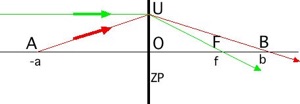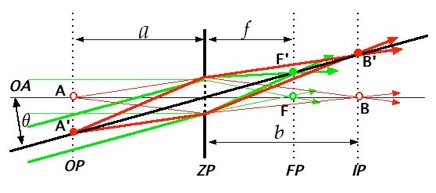Atelier Bonryu(E)
zone plate photography


Atelier Bonryu(E)
zone plate photography







Laboratory: Zone Plate Photography
Theory of Zone Plate Photography
- Image by Obliquely Incident Light -
So far we have explained how an image of a point source at infinity on the optical axis is formed at the focal point of a zone plate. But it does not prove directly that an image of a photogenic object with a finite size located at a finite distance from the zone plate is formed on an image screen. In order to explain that a picture of a photogenic object is formed on an image screen and a photograph can be taken it should be proved that an image of an off-axis point source at a finite distance from the zone plate can be formed on an image screen. For this purpose, we first explain the “the formula of an image location” which describes the relation among locations of the source
















Formula of an image location of zone plate








Focusing of an off-axis point source by a zone plate










